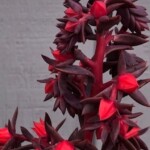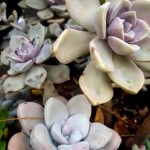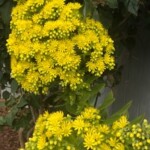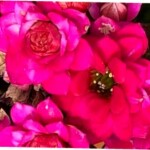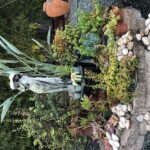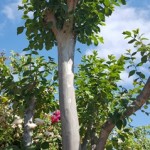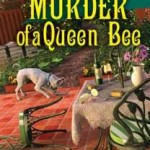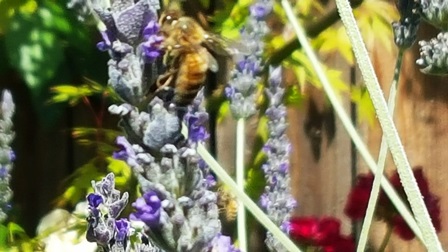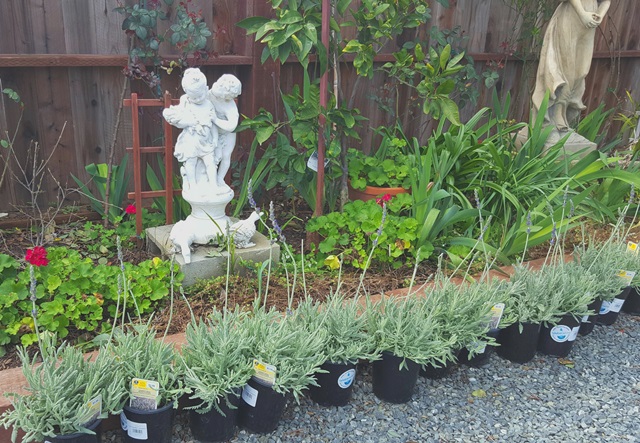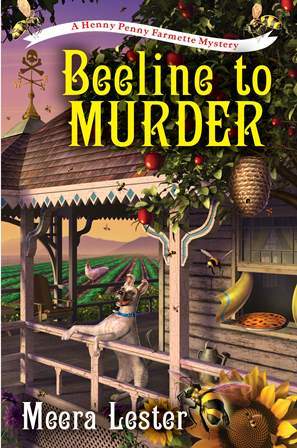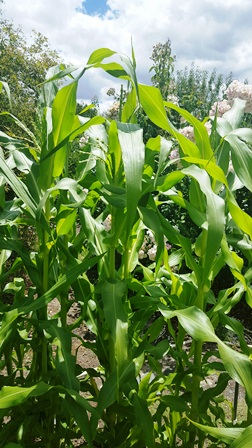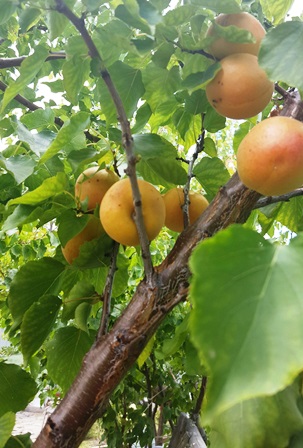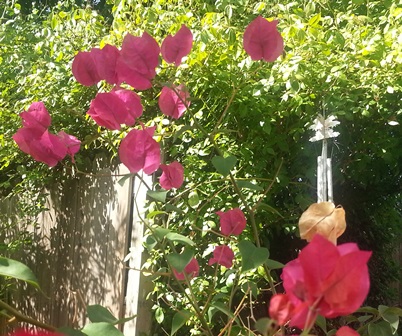Succulents Do Best Without the Fuss
Succulents are popular plants for growing both indoors and out because they require little attention beyond healthy soil, sunshine (light), and water.
Worldwide, there are over 10,000 known succulent species.
As a houseplant, a potted succulent can provide a focal point on a windowsill, enhance the beauty of a bathroom or bedroom, or brighten almost any dark corner. They store water in their leaves and stems to release moisture into your environment. Some produce spectacular blooms in gorgeous colors.
Succulents remove impurities in the air also known as “volatile organic compounds” through a process known as respiration–giving off oxygen and absorbing carbon dioxide.
The subtle ways in which the human body benefits from contact with nature are numerous. Having succulents as houseplants provides that important link to nature for many people.
Succulents can be grown outdoors in temperate climates.
Group several varieties together to make a dramatic focal point for a courtyard or garden. With so many possibilities for using succulents in your home and garden, now is a great time to create something beautiful with easy-to-grow, easy-to-propagate simply beautiful succulents.
Find a variety of succulents at your local nursery, DIY garden center, or online.
_____________________________________________________________________________________________
Enjoy gardening and country living topics? Check out my Henny Penny Farmette series of cozy mysteries from Kensington Publishing, NY. Tucked inside these novels are tips for growing heirloom plants, keeping chickens and bees, caring for fruit trees, preserving organic produce, and other urban farmette topics.
Or, check out my wellness and spirituality books for living your best life now. All are available online and wherever books are sold.
A BEELINE TO MURDER
THE MURDER OF A QUEEN BEE
A HIVE OF HOMICIDES

More than 150 rituals for sound mind, strong body, and meaningful connections to the people around you
Transplanting a Decades-Old Crape Myrtle Tree
Friends said it was a bad idea. The tree was too large, too old, and too unwieldy to dig up and transport from my daughter’s property to mine. The crape myrtle would not survive, they told me, because its large root would need to be severely cut. Also, without a crane or other lifting device, three of us would be struggling to deal with such a heavy tree.
I won’t say moving the tree was easy. It had been standing for 28 years next to my daughter’s house, but she wanted to make way for new landscaping. When the family decided to part with the tree, they called on a family friend who worked as an arborist. He would do the cutting and digging of the tree.
Crape myrtles (of the genus, lagerstoemia) are available as shrubs and trees and are lovely in bloom with showy paniculate flowers in pink, fuchsia, red, or lavender. They are one of the trees that make little-to-no pollen (great for allergy sufferers). Light pruning during the growing season can produce a second bloom. Much beloved in the deep south, these trees remain stately and beautiful for up to fifty years.
My daughter’s tree arrived at the farmette in mid-October strapped onto our friend’s truck. The roots had been cut away. There were no fine root hairs or stems left–just bare wood. Ditto for the tree canopy–just a few hefty branch stubs. I wondered if our efforts would prove futile.
Hubby and I prepared a large planting hole just off from the patio. We added amendments to the clay soil and drove in stakes to keep the tree stable for a year or more until it had sufficiently developed roots. I added root hormone to the soil and watered deeply the first day and several times that week.
The winter rains came. I watched, waited, and wondered if there would ever be sprouting of any kind on the woody ends where branches had been amputated. Despite a canopy, the tree’s trunk, a beautiful, gray-green wood, afforded a kind of beauty to the austere winter garden. Before spring, I scraped a fingernail on the back of the trunk and discovered the wood was not dried out but as green and moist as a young sapling.
A spell of warm weather and the buzzing of bees in early spring drew my attention upward. Our tree had sprouted a flurry of bronze-green leaves. Pink blooms will likely appear in June or July.
I’m happy now that we went to all the trouble of bringing that tree onto the farmette for transplanting. We’ll have lovely pink blooms over the remaining summers of my life thanks to the crape myrtle tree being so long-lived.
__________________________________________________________________
If you enjoy reading about gardening and farming topics, check out my Henny Penny Farmette series of mysteries: A BEELINE TO MURDER, THE MURDER OF A QUEEN BEE, and A HIVE OF HOMICIDES (Kensington Publishing).
Each book is chocked full of tips for gardening, keeping bees and chickens, and growing heirloom fruits and vegetables. There are also plenty of delicious recipes to try. Find these books on Amazon.com, Barnes & Noble.com, Walmart.com and other online retailers or purchase at traditional bookstores everywhere.–Meera Lester
The Quiet Beauty of a Winter Garden
There is a quiet beauty in a winter garden. You must endure cold to appreciate it. On my farmette, there’s also fog and wind and misty rain. But as you gaze in mindfulness, the rewards come.
When trees are bare, you can appreciate the beauty of their scaffolding, branching habits, and fruiting spurs. There is an attractiveness about tree bark that is rough or smooth and colored in earthy hues of green, gray, or reddish brown. Bare trunks and branches provide visual interest until blossoms and blooms break in spring.
With pruning done and leaves removed, the roses rest. Birds gather at feeders and frolic in the fountains. Beneath the soft, damp earth, roots are taking in nutrients to prepare the fruit trees for a surge of growth when warmer days arrive.
The garden is a place to conjure memories and ponder life and destiny. Goethe, the German playwright, poet, and novelist wrote that “Sometimes our fate resembles a fruit tree in winter. Who would think that those branches would turn green again and blossom, but we hope it, we know it.”
Winter is the perfect time to contemplate the tap root of your being and to think and and dream and plan for what will blossom in your life when warmth and light returns. French philosopher and author Alfred Camus wrote, “In the depths of winter, I finally learned that within me there lay an invincible summer.”
I have a simple ritual of visiting my winter garden. I prepare a cup of hot water with juice of half a lemon and a tablespoon of honey or sometimes just a cup of coffee or tea. Then with cup in hand, off I go to inspect the fruit trees, the bare grape and berry vines, and the soil turned in raised boxes waiting to receive kitchen herbs. This ritual inspires me and silently powers me up with hope and energy.
Perhaps you have a similar winter ritual. If not, consider checking out my newest nonfiction book, RITUALS FOR LIFE and plant something in the earth or the garden of your psyche that holds the promise of bearing fruit in its own perfect time. Now is the time to greet each new winter day for the blessings it brings and appreciate the stark beauty of Nature.

More than 150 rituals for sound mind, strong body, and meaningful connections to the people around you
Let’s Talk Tulips
A jolt of color can energize dreary surroundings. Imagine seeing a pot of searing-red or brilliant yellow tulips in full bloom in a window box or in your garden when little else is blooming in early spring.
Right now, many garden centers, DIY nurseries, online plant retailers, and seed catalogs feature tulips bulbs for sale. Fall is the time to plant them for spring blooms.
The standard tulip is an excellent cut flower. It offers consistent pure color in a single layer of petals. A double tulip possesses two petal layers and provide lush color grouped together with other tulips or in a cut-flower arrangement.
Kaufmanniana tulips are short in height with pointed petals. In bright sunlight the tulip bloom will open wide to lie almost flat making them the perfect bulb to grow in a rock garden.
Parrot tulips come in a variety of colors and have ruffled petals. These beauties grow fast (stalks bend a bit more than the standard tulip because of the weight of the bloom), and are multi-colored. See, http://www.hollandbulbfarms.com/items.asp?cat=Parrot-Tulips&Cc=TULIPPARROT

Inspired by parrot tulips years ago, I made this pique assiette mosaic on the step up into my garden
Fringed tulips feature a bloom edge that resembles fringe. The edges have also been described as frilly or ragged. Nevertheless, these are beautiful grouped together in an arrangement or simply enjoyed in a bed in the garden or a pot on the patio.
A bi-colored tulip surprises with a two-color bloom–perhaps an orange with a purple base. Prinses Irene is a beautiful specimen of this type of tulip.To see an image, check out https://www.whiteflowerfarm.com/211402-product.html
Rembrandt tulips are striped and tall and stand out anywhere they’re planted. Today’s version of this tulip is a non-viral variety (a virus is what originally caused the striping element of the standard tulip.
Emperor tulips feature bold color, large delicate blooms, and variable height. Although Emperor is the common name, these tulips also are known as Fosteriana tulips. They came from a wild mountainous species found in Central Asia. See, http://www.tulipworld.com/Fall-Planted-Bulbs/Tulips/Fosteriana-Tulip/Red-Emperor-Tulip.aspx
As its name implies, the Lily-flowering tulips in bloom have the appearance of lilies. The bloom looks like a star-shaped cup. Although color choices are limited, the hue is rich–for example, a fiery red with yellow-tinged edges of the Aladdin type. See, https://www.tulips.com/product/aladdin/lily-flowering-tulips
There are many more types of tulips–those I’ve mentioned are only a few. Now is the time to search your garden centers for the tulips you want blooming in your spring garden. There are many to choose from so if you don’t find what you’re looking for at your local nursery, check seed catalogs or online nurseries that can ship bulbs directly to you.
___________________________________________________________
If you enjoy reading about gardening topics, check out my Henny Penny Farmette series of cozy mysteries. Interspersed throughout the book are tips on growing plants, keeping bees and chickens, and delicious farm-to-table recipes and, of course, there’s a cozy mystery to solve.
A Beeline to Murder, The Murder of a Queen Bee, and A Hive of Homicides are all available from traditional bookstores everywhere and online. Click on the URL for more information: http://tinyurl.com/ya5vhhpm
When a couple is killed at a local winery after renewing their wedding vows, ex-cop turned farmette owner Abigail Mackenzie launches a personal investigation of her own. The victims are her good friend Paola Varela and Paola’s husband Jake Winston. Jake was a good-looking, a town flirt, and someone who’d had an affair that had ended tragically. Was he finally getting a karmic payback from an incensed husband or boyfriend? Or, was Paola the intended target?
Also see, http://tinyurl.com/yd7pz7af
French Lavender–A Favorite of Pollinators
It’s bare-root season, a special time of the year for me. I like to visit local nurseries and check out the new offerings of heirloom roses, fruit trees, berries, herbs, and flowers. No matter which nursery I visit, I always seem to spot the lavender first.
After we moved to the Henny Penny Farmette, we put in lots of French lavender. But after a few years, the stalks have grown old and woody.
Recently, on a visit to a nearby nursery, we purchased twenty one-gallon plants of French Lavender, an upright perennial that we’ve discovered blooms almost all year long in our Bay Area climate.
Now, they are hardening off in my garden until I get around to planting them.
The word “dentata” means toothed and a closer examination of the foliage reveals fringed indentations.
This aromatic, shrub has been around for centuries. Valued for its ornamental and medicinal properties, it also is used for soil erosion control. Once established, the lavender is drought tolerant.
Many gardeners love this lavender for its gray-green leaves. When other flowering plants in the garden have finished their blooming cycle, this lavender keeps producing tall spikes of bright purple florets.
Not as brilliant in color as the English or Spanish lavender, the French lavender is lovely grouped together in a single area where its flower stalks can sway in the wind. Our honeybees and other pollinators love it.
* * *
If you are a fan of cozy mysteries and love farmette topics like gardening of heirloom vegetables, herbs, and fruits as well as keeping chickens and bees, check out my Henny Penny Farmette series of cozy mysteries from Kensington Publishing.
Besides a cozy mystery to solve, these books mix in delicious recipes, farming and gardening tips, facts about keeping bees and chickens, and morsels of farm wisdom.
- COMING SOON– Sept. 2017, the third novel in the Henny Penny Farmette series
Time Spent in a Potager Garden Renews the Spirit
With the official start of summer a few days away, I find myself leaving my computer and the scene I’m writing on my third novel to take a break in the garden. Alive with honeybees, bumblebees, butterflies, and hummingbirds, the garden is perfect place for a respite and a cup of tea.
Quite like a potager garden that includes flowers, herbs, trees, vegetables, berries, and grapes, mine also includes a patch of corn.
Embroidered around the edges of the garden, there are climbing roses, fruit trees, and lots of lavender. Along the rows of lavender, there are peach trees with fruit the size of softballs and five pomegranate trees, laden with blooms and new fruit.
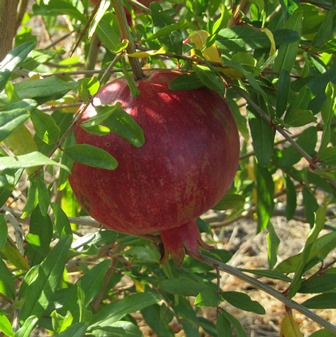
The pomegranates aren’t quite this large yet, but the trees have so much fruit, they’ll have to be thinned.
As I meander, I discover the trees of red and yellow plums have begun to drop their ripe fruit. I’ve got to make those plums into jelly or jam and ditto on the apricots.
But that work will have to wait until my late afternoon tea break. My novel won’t write itself. Still, the time I spend in the garden revitalizes my spirit and refreshes my brain cells, enabling me to return to the computer and the scene I’m writing with renewed vision and vigor.
* * *
If you enjoy reading about gardening, keeping bees, raising chickens, and creating delicious recipes, check out my novels from Kensington Publishing.
The Henny Penny Farmette series of cozy mysteries are available at Amazon, Barnes and Noble, Kobo Books, Walmart, and other online and traditional bookstores everywhere. Available in hardcover, Kindle, and mass market paperback formats.
Bougainvillea Vines Are Valued for Their Vibrant Color
If you’re looking for something that gives dense cover with green leaves and has prolific flower production, think about planting some bougainvillea vines. After my husband recently picked up four bougainvilleas in gallon-pots from our local nursery where the plants were on sale, we planted them around the front porch.
When you buy them in pots during spring and summer, you can pick bract color. The nearly inconspicuous blooms are surrounded by large, vibrantly colored bracts. Color choice ranges from red, orange, pink, fuchsia, deep purple, and white.
You’ll need to protect these evergreen shrubby vines where frost is expected. They’ll benefit from being moved to a warm wall. In fact, bougainvillea will thrive in the warmest parts of the garden. That said, they may even need a little shade protection in extremely hot areas.
Since the roots aren’t interwoven tightly in a root ball, you’ll want to plant them with care or slice the sides of your plastic gallon pot a half-dozen times, fold back, and plant pot and all in the planting hole.
Spring and summer are the best times to fertilize. Prune to renew the plant in the spring after the danger of frost is over. Many bougainvillea plants are tall growing varieties but you can also find some considered low- to medium-growing shrubs. These vines are show-stoppers with curb appeal and an even better value when you get them discounted at your local plant nursery.
 Facebook
Facebook Goodreads
Goodreads LinkedIn
LinkedIn Meera Lester
Meera Lester Twitter
Twitter




